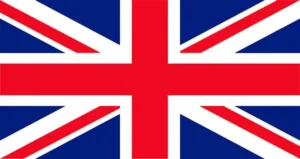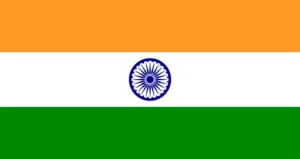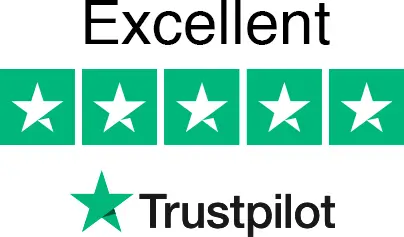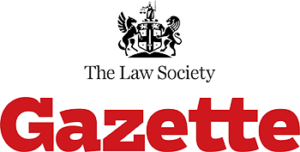Key Takeaways
- In the UK, most copyright images become free to use after 70 years have passed since the creator’s death—known as the “life plus 70 years” rule.
- To work out from which year you can use a copyright image, you must confirm both the date the image was created and the year the creator died.
- Where the creator is unknown or the image is considered anonymous, a different UK expiry applies: normally 70 years from when the work was first made public.
- Special rules apply to Crown Copyright images and works created by companies—these categories have their own defined expiry dates, so require extra checks.
- Using a protected image before copyright expires can lead to legal disputes, financial penalties, or orders to remove your content, so always verify before using.
- Copyright expiry dates in the UK may differ from those in other countries—always use a UK-specific calculator and follow UK law if you’re based in England or Wales.
- Using public domain images isn’t entirely risk-free; moral rights or trademarks may still apply, so always keep records of your due diligence.
- Our Go-Legal AI platform gives you user-friendly tools and stepwise guides to confidently check if an image falls out of copyright in the UK.
- If you discover you’ve accidentally used a protected image, Go-Legal AI provides template response letters and practical next steps to minimise your risk.
- Go-Legal AI is rated Excellent on Trustpilot with over 170 five-star reviews from UK users.
Key Dates—From What Year Can You Use Copyright Images in the UK?
Many business owners, creatives, and startups worry about accidentally using images without proper permission. With UK copyright law, the cost of a mistake is real: you could be forced to remove your content, pay damages, or even face expensive legal threats if you get it wrong.
The core UK copyright rule is clear. For most images—photographs, illustrations, or artwork—the protection ends 70 years after the creator dies. From that point, these images become part of the public domain, often called “public domain images UK”.
But this “life plus 70 years” rule has exceptions. If the image was created by an anonymous author, belongs to a company, or was made for the UK government, the copyright expiry may differ. Each category needs careful attention before you use the image for your business, website, or social channels.
From What Year Can You Use Copyright Images in the UK?
If you’re asking “from what year can you use copyright images in the UK”, start with the standard “life plus 70 years” rule:
- Copyright in an image lasts until 70 years after the end of the year in which the creator died.
- The image enters the public domain on 1 January of the next year, when anyone can use it in the UK.
To calculate the year an image is free to use:
- Identify the year the creator died.
- Add 70 years.
- The image is out of UK copyright from 1 January of the next year.
This rule applies if the actual creator is known and credited. If not, or if the image falls into a special category, consult alternative expiry rules (see below).
⚡ Get legal tasks done quickly
Create documents, follow step-by-step guides, and get instant support — all in one simple platform.
🧠 AI legal copilot
📄 5000+ templates
🔒 GDPR-compliant & secure
🏅 Backed by Innovate UK & Oxford
What Is the “Life Plus 70 Years” Rule for Copyright Images?
The “life plus 70 years” rule is embedded in the Copyright, Designs and Patents Act 1988. For any image—whether a photo, painting, or digital illustration—where the creator is known, copyright lasts for 70 years after the calendar year in which they die. After this, the work moves automatically to the public domain in the UK.
- The “plus 70 years” calculation always refers to full calendar years. Protection ends on 31 December, and free use begins on 1 January of the next year.
- Using these rules helps you confidently identify works you can use for commercial or creative purposes.
How to Check If an Image Is Out of Copyright in the UK: Step-by-Step Guide
Before using any image, follow this seven-step checklist to avoid legal issues:
- Identify the creator: Search for the artist, photographer, or company named on or linked to the image.
- Find the date of death or year of creation: Use reputable sources—official websites, biographies, archive records, or databases.
- Apply the right rule: If the creator is named, add 70 years to their death year. Images become public domain the next 1 January. If anonymous or company-owned, check publication date and apply the correct rule (see the table below).
- Check for special categories:
- Crown Copyright: Most government-created images follow different timelines.
- Orphan works: Where authors can’t be found, you may need a UK orphan works licence.
- Look for permission statements: Many museum, archive, and public databases mark work as “public domain” or similar—use these confirmations if available.
- Document everything: Keep a log of all sources, calculations, and key emails or screenshots, dated for future reference.
- If unsure, use Go-Legal AI’s Copyright Checker: Our tool walks you through this process, generates evidence, and creates a digital due diligence record automatically.
Special Rules for Crown Copyright, Anonymous, and Company-Owned Images
While most images follow the “life plus 70 years” rule, there are key exceptions:
| Type of Image | Expiry Rule | What This Means for You |
|---|---|---|
| Known author | 70 years after creator’s death | Free to use after this date, if no other rights apply |
| Anonymous/pseudonymous | 70 years from publication (or creation, if unpublished) | Use after this term if author remains unknown |
| Company-owned | Usually life + 70 (if the employee is identified), or anonymous rules | Check which rule fits the specific image |
| Crown Copyright (published) | 50 years from publication date | Government images may be free to use sooner |
| Crown Copyright (unpublished) | 125 years from creation | Applies to internal/unpublished government material |
| Orphan works | Not free—apply for an orphan works licence | Needed if the holder cannot be found, via UK IPO |
- Crown Copyright: Applies to images made by or for UK government bodies. Most published Crown Copyright images expire 50 years from publication, while unpublished material expires 125 years after creation.
- Anonymous / pseudonymous: Where the creator can’t be identified, the term is 70 years from when it was first made public.
- Company-owned images: If created as part of employment and the actual creator is known, use their date of death. If no human author is credited, apply the anonymous rule.
- Orphan works: If no owner can be traced after a diligent search, you need an orphan works licence from the Intellectual Property Office to use these images legally.
Key Dates and Duration Rules for Image Copyright in the UK
When Do Images Enter the Public Domain in the UK?
Images in the UK become “public domain” the day after their copyright term expires—so always 1 January of the applicable year. Only after this date can individuals and businesses reuse, edit, publish, or sell the image without permission.
If an artist died in 1954, their work is protected until 31 December 2024, and enters the public domain on 1 January 2025.
Public domain images carry no copyright restrictions, but might still face other legal restrictions such as trade marks or data protection.
Using a Copyright Expiry Table or Calculator
Consult this quick reference to check expiry dates for common image categories:
| Scenario | Calculation | Example | UK Use Date |
|---|---|---|---|
| Known creator | Death year + 70, use from 1 January next year | Died 1954 → expires 31 Dec 2024 | 1 Jan 2025 |
| Anonymous | Published year + 70 | Published 1930 → expires 31 Dec 2000 | 1 Jan 2001 |
| Crown Copyright (published) | Publication year + 50 | Published 1970 → expires 31 Dec 2020 | 1 Jan 2021 |
Safe Use Checklist: Verifying and Documenting Public Domain Image Use
To keep your business protected, always follow this public domain image checklist:
- Complete expiry checks: Confirm the correct copyright term has expired.
- Check for other legal rights:
- Moral rights: Even if copyright is over, the right of attribution can persist unless formally waived.
- Trade marks: Logos or branded materials may still be protected.
- Privacy or access terms: Some archives impose usage or database restrictions.
- Use trusted sources:
- The National Archives (UK)
- Wellcome Collection
- Wikimedia Commons (with UK PD tags)
- British Library digital collections
- Keep records:
- How you checked expiry
- Screenshots or PDF confirmations
- Your calculation steps
- Acknowledge sources when possible: Proper attribution builds trust, reduces misunderstandings, and boosts your compliance.
Common Mistakes When Using Copyright Images and How to Avoid Them
| Mistake | Problem | How to Avoid |
|---|---|---|
| Assuming all “old” images are free | Some still in copyright, especially if creator died after 1954 | Always calculate expiry based on author’s death or publication date |
| Overlooking anonymous or company attribution | Wrongly applying “life plus 70” can risk infringement | Establish author type, then apply correct rule |
| Ignoring trade marks or moral rights | Logos and moral claims can survive copyright expiry | Always check for additional rights and credit where needed |
| Trusting foreign public domain sites for UK use | UK rules may protect images public domain in the US or elsewhere | Work out expiry based on UK law only |
| Failing to document or evidence checks | Harder to show good faith if challenged | Save your research and calculation records for every image used |
| Using orphan works without licence | Not legal in UK unless you hold an orphan works licence | Apply to UK IPO if the rights holder cannot be found |
Public Domain Images in the UK vs Other Countries: Key Differences
Remember, copyright is territorial. UK “public domain images” may still be protected in other countries, and vice versa.
- UK rules: Generally, life of the creator plus 70 years.
- US rules: Many works published before 1929 are public domain (regardless of author’s death).
- Other countries: May have different standards—some use only “life plus 50 years”.
What To Do If You Accidentally Use a Protected Copyright Image
Accidents happen—even the most careful businesses may occasionally use a protected image by mistake. If you realise this, act quickly:
- Remove the image immediately: Take it down from all websites, social posts, and printed material.
- Assess your usage: Consider where and how the image appeared, and how widely it was shared.
- Double-check copyright status: Review your calculation or run it via our Copyright Checker tool.
- Respond to any notice or claim: Always reply promptly, confirm your actions, and show cooperation.
- Draft a response letter: Clearly explain what happened, demonstrate your compliance steps, and request a resolution.
How Go-Legal AI Simplifies Copyright Image Checks and Compliance
Go-Legal AI is designed to make UK image copyright compliance straightforward for business owners, startups, and creatives:
- Copyright Expiry Calculator:
Instantly check when any image enters the UK public domain—even for unclear authorship or government works. - Copyright Checker:
Our platform walks you through identification and expiry calculations, saving digital records for audit or future reference. - Ready-to-use templates:
Draft due diligence records, credit lines, and response letters in minutes—no legal background needed. - Comprehensive compliance steps:
Avoid mistakes by following our stepwise guides, including clear alerts for orphan works and Crown Copyright. - Cost-effective, no surprises:
Quickly check multiple images for clients or campaigns with no need for expensive outside advice.
Frequently Asked Questions
How do I know if an image is public domain in the UK?
Identify the creator and date of death, then add 70 years to the year they died. If the creator is unknown, use the anonymous or publication date rule. Or, use our Copyright Checker tool for an instant answer.
Can I use an image if I don’t know when the creator died?
Not automatically. If reasonable searches don’t confirm the author, treat the work as anonymous (70 years from publication), or apply for an orphan works licence UK. Always log your efforts and sources.
Are all images published before 1950 free to use?
Not always. The copyright term depends on the author’s death year, or (for anonymous/government works) the publication or creation date. Many images from before 1950 are still protected.
What is the copyright term for photos and illustrations?
Generally, life of the creator plus 70 years. Special rules may apply for anonymous, corporate, or Crown Copyright works.
Can I use government or Crown Copyright images?
Yes, if the Crown Copyright term has expired: typically 50 years after publication, or 125 years if unpublished. Always confirm the official status or check with the relevant government archive.
Does digitising or editing a public domain image create new copyright?
No, not for the original image. A creative digital edit may create fresh copyright in that particular version, but not in the underlying work.
What if I receive a copyright infringement notice?
Take down the image immediately, document your removal, investigate the copyright status, and use our templates to prepare a robust, evidence-based response.
Are public domain images totally risk-free to use?
Not entirely. Moral rights, trade marks, privacy, or database agreements may still apply. Always check beyond just copyright expiry.
What is an orphan works licence and when do I need one?
It’s a UK licence allowing the use of images where the copyright holder can’t be identified, after a documented search. Apply via the Intellectual Property Office.
How do I keep records of my copyright checks?
Maintain a checklist of all steps taken—dates, screenshots, and calculations. Our platform helps you generate and store this information as part of your workflow.
Check Copyright Image Expiry With Confidence—Start with Go-Legal AI
Safely using copyright images in the UK is a business-critical task. Miscalculations, missed details, or poor records can result in fines, takedowns, or reputational damage—while following a clear, robust process keeps your projects compliant and stress-free.
With Go-Legal AI, you get:
- Automated UK copyright expiry calculations,
- Step-by-step compliance guides tailored to your type of image,
- Templates for due diligence and response letters should issues arise,
- Tools designed for non-lawyers, keeping your business protected from accidental infringement.
Stop relying on guesswork or overseas “public domain” labels. Build legal confidence into every project—try our platform’s Copyright Expiry Calculator and compliance tools for free today.
Ready to ensure your images are safe to use under UK copyright law? Use our AI-powered checks, keep audit-proof records, and protect your business with Go-Legal AI.










































